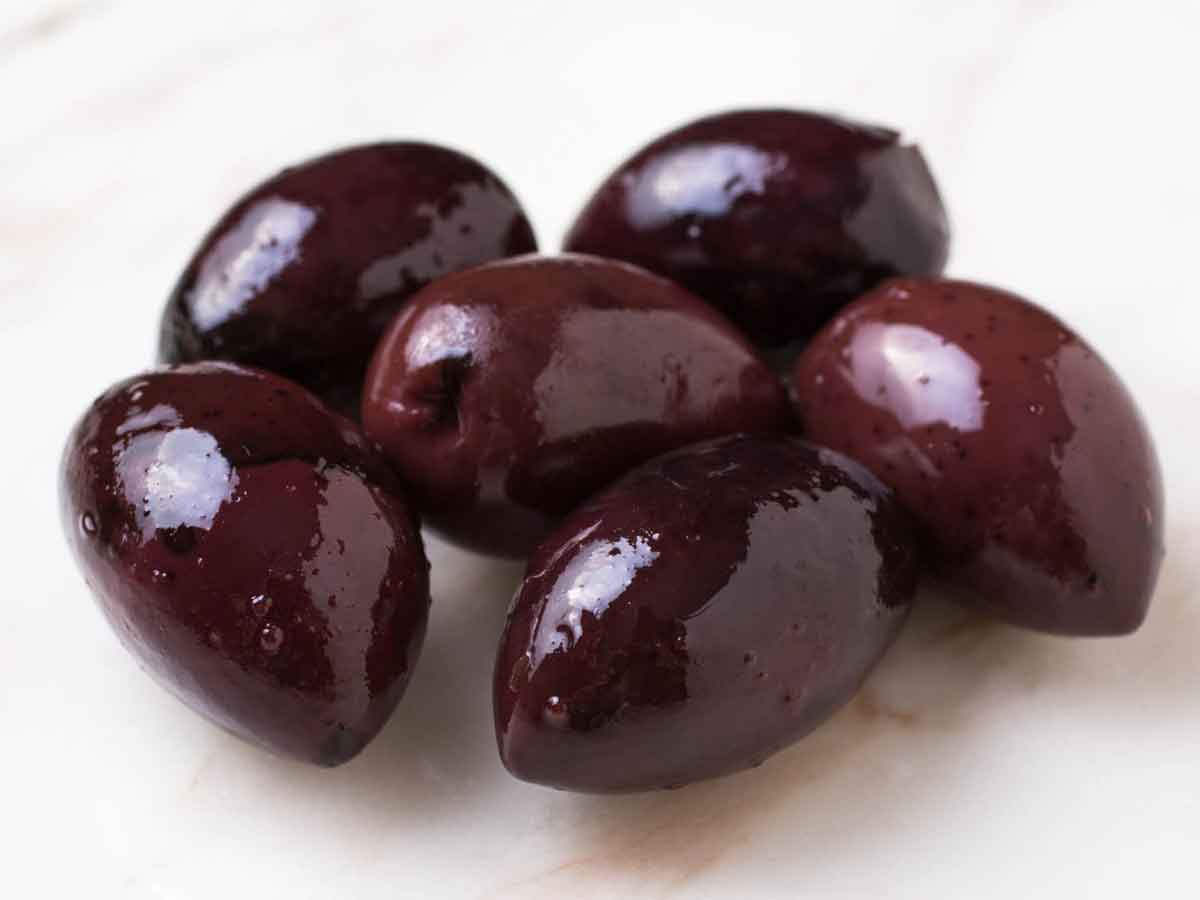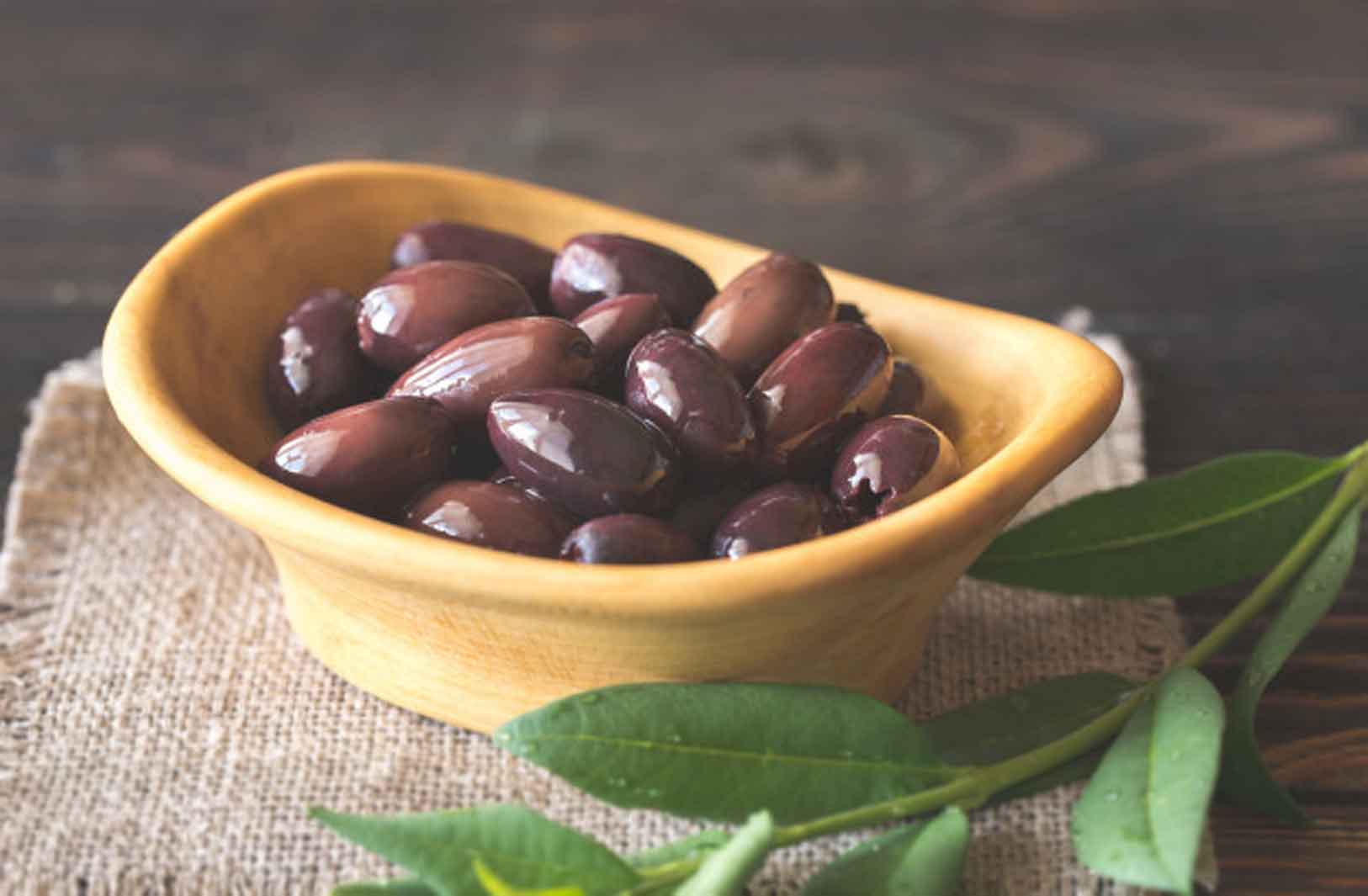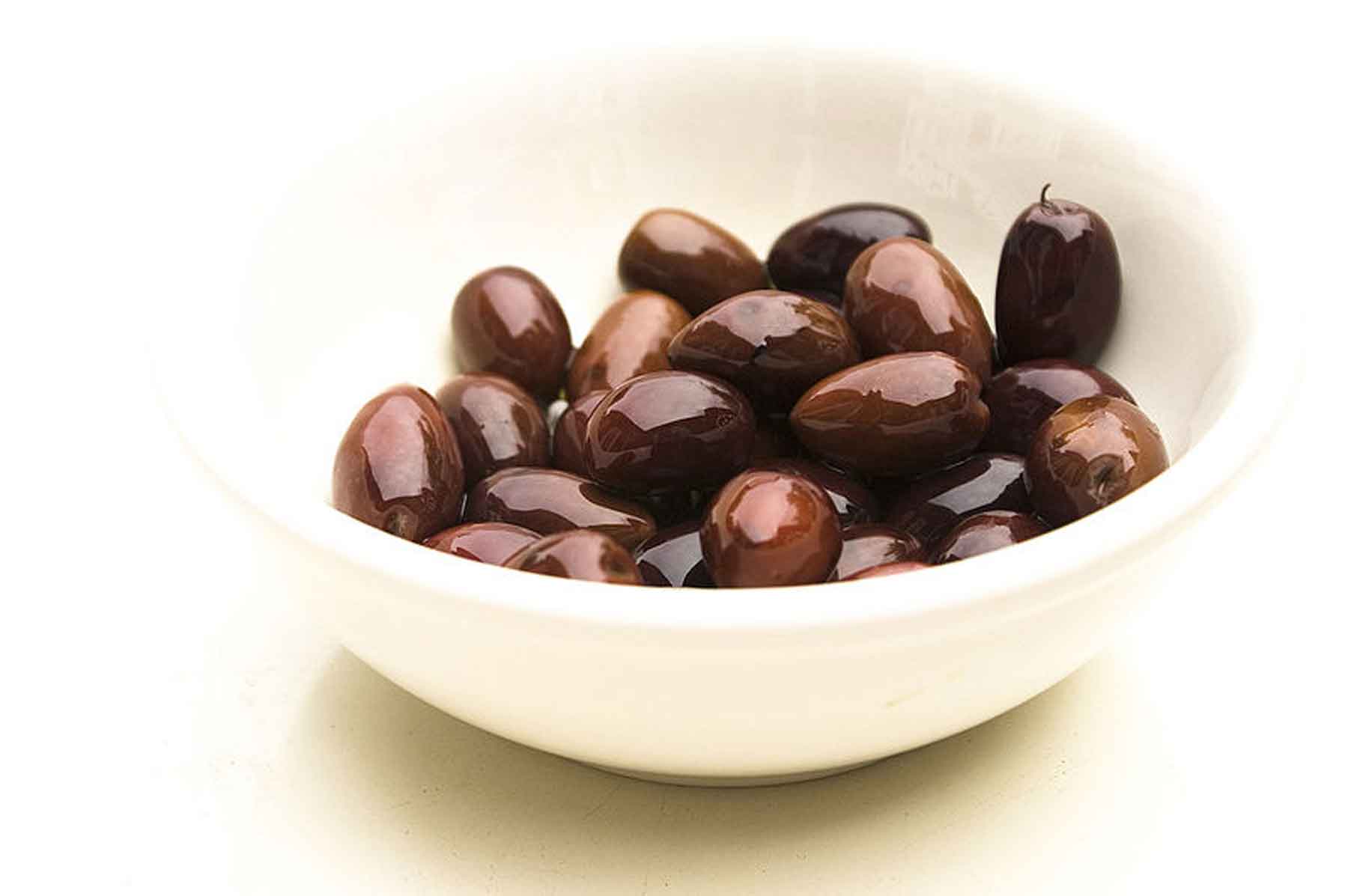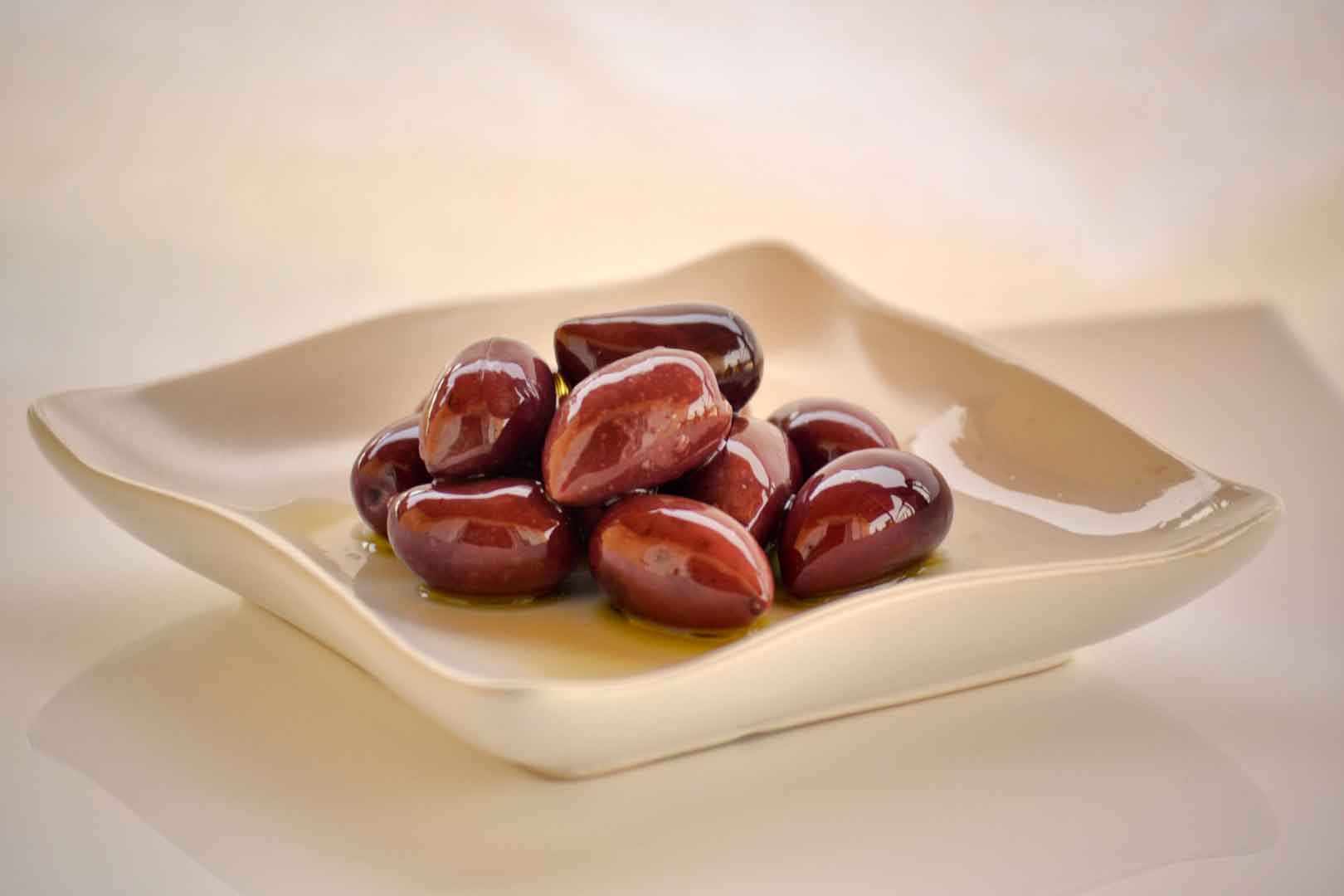|
|
| Kalamata Olive |
| The king of Greek table olives, beloved and popular Kalamatas are deep purple, with tight, snappy, shiny skin, and a pretty almond shape. They're typically preserved in red wine vinegar, red wine, and/or olive oil for a distinctive rich, smoky, fruity flavor. This variety is a great candidate for tapenades, but I also loved them served simply with some roasted cauliflower. |
|
 |
|
| The Kalamata olive is a large, dark purple olive with a smooth, meaty texture, named after the city of Kalamata in the southern Peloponnese, Greece. Often used as table olives, they are usually preserved in wine vinegar or olive oil. Outside the European Union, "Kalamata" is commonly used as the name of the variety and is legally and commonly used for such olives grown anywhere. However, within the EU the name is protected with PDO status, which means in the EU the name can only be used for olives (and olive oil) from the Messinia region of Greece. Olives of the same variety grown elsewhere are marketed as Kalamon olives in the EU and, sometimes, elsewhere |
 |
Kalamata olives are so-named because they were originally grown in Kalamata in Messinia and also in nearby Laconia, both located on the Peloponnese peninsula. They are now grown in many places around the world, including in the United States and Australia. They are almond-shaped, plump, dark purple olives from a tree distinguished from the common olive by the size of its leaves, which grow to twice the size of other olivevarieties. |
|
The trees are intolerant of cold and are susceptible to Verticillium wilt but are resistant to olive knot and to the olive fruit fly. Kalamata olives, which cannot be harvested green, must be hand-picked in order to avoid bruising. They are classed as black olives. |
Processing of black olives in Kalamata procedure is widely used in Greece. Used for this type of olives of Kalamata. In Turkey, the procedure is applied to Gemlik and used the form of olives Karamursel Su. Procedure Kalamata black olives prepared three different ways. |
| Collecting olives performed by hand, then gathered olives are checked. Kalamata Olives are checked manually and removed beaten, squeezed, crushed, rotten seeds and stems of the olives. After checking begins the sorting process. Sorted olives are loaded into a special machine for incision olives. Typically incisions do on both sides, in some areas this is done with a needle. Incised olives are immersed in water or 2% of salt water. |
 |
|
| Water or salt water is changed 1-2 times a day, and after 5-8 days bitter of olives disappears. Kalamata Olives have lost their bitterness poured wine vinegar for 1-2 days, and then olive acquired the taste of vinegar.After, the olives are placed in containers and shipped 8% brine. To purchase an aromatic flavor adds a little lemon and olive oil. |
 |
Second Method
In this method, to prevent loss of vinegar, in containers a placed olive in brine is added to the vinegar.
Third Method
In this method, before incision olives are placed in sweetened water. Olives pulled out of the water and sorted incision and placed in containers and then filled in 8% brine solution. To make the olives aromatic taste you can add slices of lemon and olive oil. |
|
|
|
|
|
|
|

